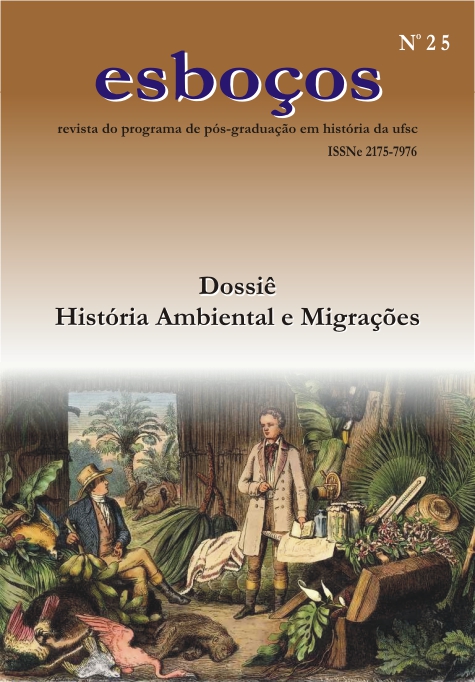Protected areas: solution for preservation? Araucaria Forest in the State of Santa Catarina
DOI:
https://doi.org/10.5007/2175-7976.2011v18n25p96Abstract
This article aims to analyze the historical process of deforestation of the Araucaria Forest in the West of the State of Santa Catarina, Brazil, during the 20th century and early 21th century. In addition, discuss the process that led to the creation of Conservation Units in the year of 2005 by the Federal Government. In the State of Santa Catarina, the Araucaria Forest accounted in the past for 42.5% of the total vegetation. Currently the remaining fragments correspond to less than 5% of the original area and only 0.7% can be considered as native Forest, placing it among the most threatened typologies of the Atlantic Forest. The colonization process chosen for the region is one of those responsible for the current situation of the Forest. The analyses of different sources indicates that devastation occurred regardless of legislation, the problems resided in Law enforcement and overlapping economic interests and even in the absence of a public opinion acting in defense of preservation ad reforestation of the Araucaria Forest.Downloads
Published
2011-06-23
How to Cite
Nodari, E. S. (2011). Protected areas: solution for preservation? Araucaria Forest in the State of Santa Catarina. Esboços: Histories in Global Contexts, 18(25), 96–117. https://doi.org/10.5007/2175-7976.2011v18n25p96
Issue
Section
Special issue
License
Esboços: histories in global contexts adopts an Open Access policy and it is licensed under a Creative Commons Attribution 4.0 International License (CC-BY 4.0). Authors will be asked to sign an open access license agreement before publication.
Authors who publish with this journal agree to the following terms:
- Authors grant the journal Esboços: histórias em contextos globais (ISSN 2175-7976) right of first publication with the work simultaneously licensed under a Creative Commons Attribution 4.0 International License (CC-BY 4.0).
- This license allows users to remix, transform, and build upon the material, on the condition of giving acknowledgement of the work's authorship and initial publication in this journal.
- 3.Authors are able to enter into separate, additional contractual arrangements for the non-exclusive distribution of the journal's published version of the work (e.g., post it to an institutional repository or a personal website, or publish it as a book chapter or a translation).

This work is licensed under a Creative Commons Attribution 4.0 International License.







